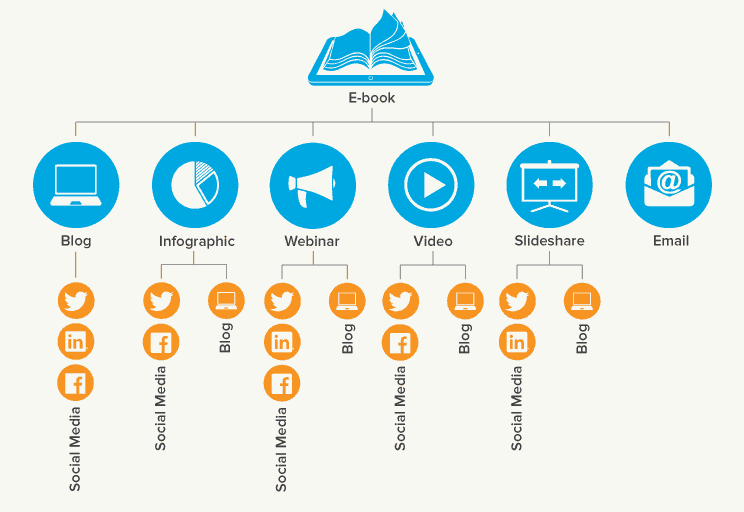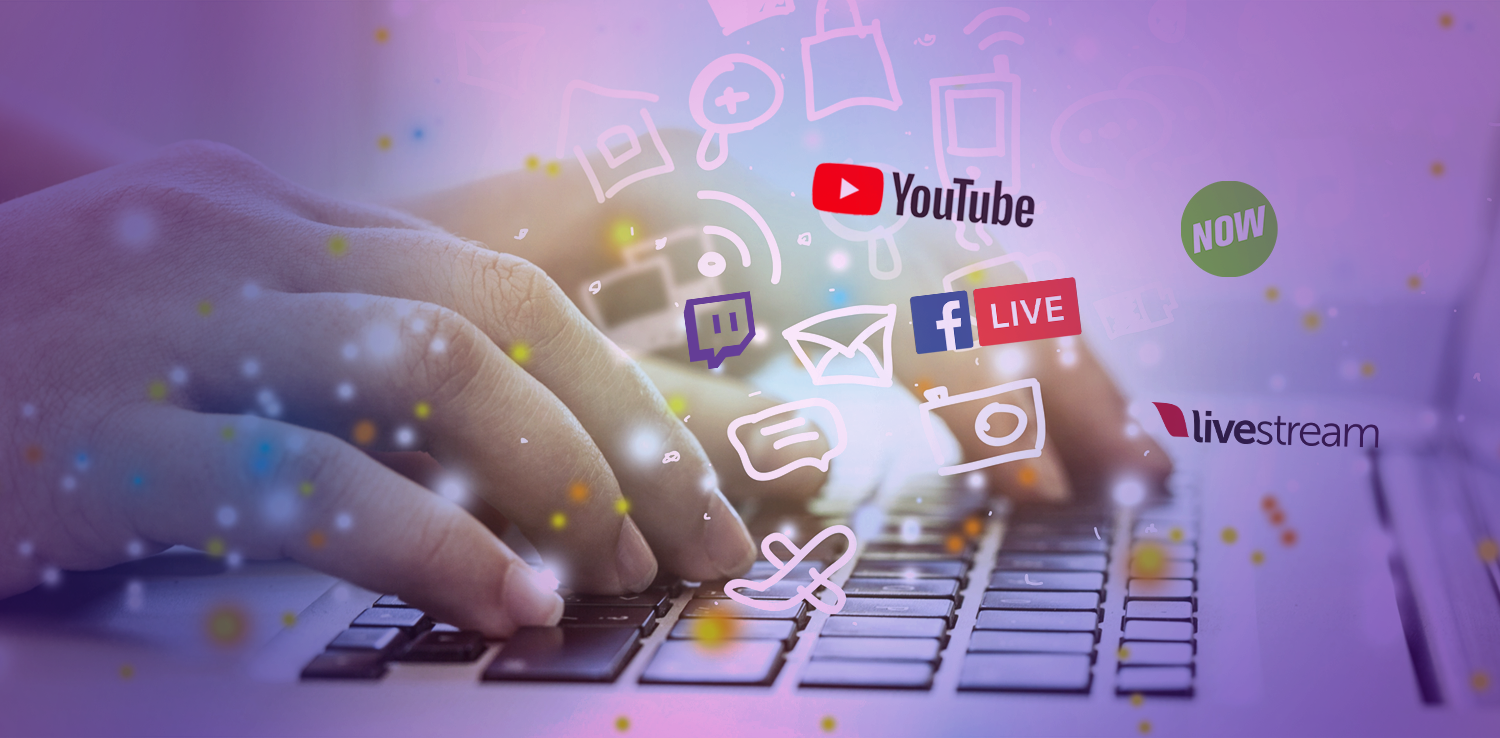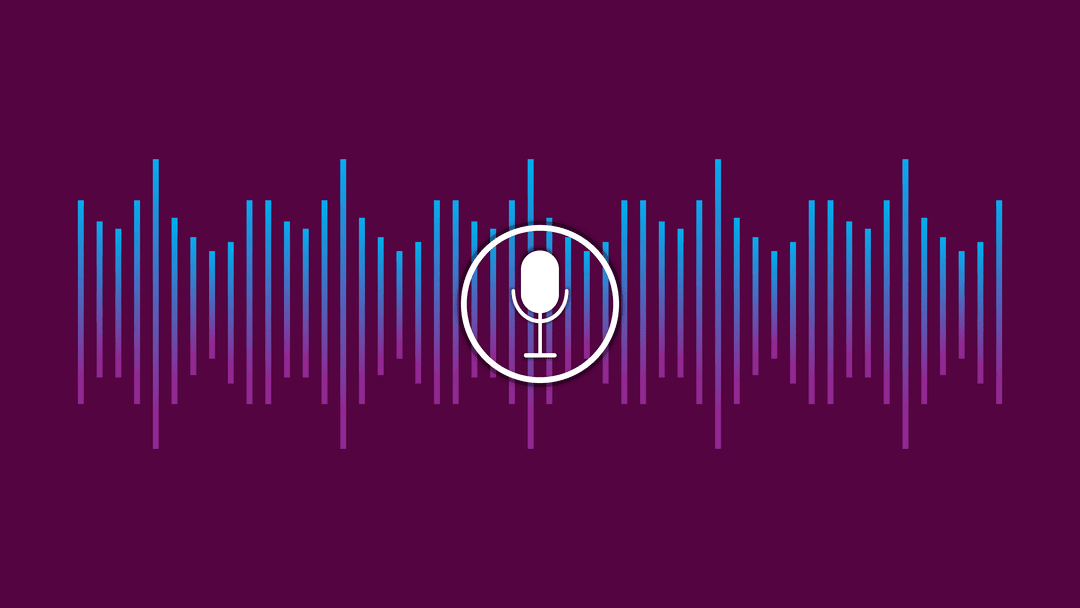How to Use Content Repurposing to Increase Your Multi-Channel Content Production
If you are into any type of marketing or you have a blog, you might have heard of content refreshing and content repurposing. But do you know the difference between the two, and which should be used for any particular piece of content? There are many benefits to both approaches and each is preferred in […]

If you are into any type of marketing or you have a blog, you might have heard of content refreshing and content repurposing. But do you know the difference between the two, and which should be used for any particular piece of content?
There are many benefits to both approaches and each is preferred in a different case. While refreshing content means keeping things up to date, (updating statistics, links, expanding on knowledge within an article, or altering subheadings), content repurposing is a restructuring of content on a much deeper level. Read on, to find out why and how is it used by some of the best marketers.
What is Content Repurposing?
Simply put, content repurposing is finding a way to spin a certain piece of content so that it covers new topics while still being based on its initial essence. Unlike content refreshing, where you change things within an article or piece of content, here you need to change everything, and sometimes you could even change the format. (For example, turn an article into a video, or vice-versa.)
By covering a topic on multiple channels, you get additional benefits like audience expansion. Some people prefer to read, while others love watching videos and listening to your content. Covering both doesn’t always mean a higher budget, since you can easily base the copy of your video on an article that has already been written.
Content repurposing finds many uses especially in large organizations or businesses with larger audiences. Such purposes can be:
- Creation and diversification of content. (Cheaper content than a brand new one, but that doesn’t mean it lags in quality.)
- Helps your brand expand into more than one channel. (If you have a blog, you can start posting YouTube videos for example. Platforms like LinkedIn, Facebook, Instagram or even TikTok can be used to capture your audience with quick tips, or engaging content, based on your articles or other already published content.)
- The more channels your brand uses, the more power your sales team would have. Direct contact with audiences is very important to closing a sale.
- The more channels you use, the more backlinks you can create toward your CTA landing.
Benefits of Content Repurposing
The most important thing about content repurposing is that you won’t be paying a copywriter for brand new creations. Content repurposing often takes less time than creating something out of nothing. You would actually be spinning something you’ve already published, which results in cheaper. And while lowering the cost is one thing, the quality of your posts would still hold up to their ancestors. The most common benefits are:
- Lowers cost. (Explained above)
- Expands your audience. (When used on multiple channels.)
- Expands your ideas. (Often when you are spinning a piece of content, you come up with new ideas and eventually start making research.)
- Creates cross-links between content. (If you spin an article and cover another very closely related topic to the first, you can always cross-reference them when they have touchpoints, resulting in a double-linked traffic funnel from each article to the other. It’s pretty much the same like YouTubers send you from one video to another in the end screens.
All of these are enough reasons. But imagine your content is depending on a sport or a video game that requires patching so that you can dish out new content, based on the professional scene. What happens if that sport’s professional scene becomes because of an event like COVID? Well, you start repurposing content. You can write about the 1994 world cup, or about how David Beckham became what he is today.
If something has taken a step back from developing, that doesn’t mean the audience interested in it has given up on it.
How to start repurposing content in Multiple Channels?

Do you have a blog, or a video blog, full of closely related topics? Perhaps you have a website that guides people on marketing decisions or expands their knowledge within a certain field or hobby like woodworking or painting. Regardless of what you do, you’ve already grown a database of information that your users are just begging to get synthesized.
Creating an E-book can not only boost the interest in your products but also be used as an advanced sales funnel. An E-book can be filled with links toward the content you create, and toward direct landing pages of products and services. It can even be used as a mini affiliate platform. You can promote products, services, websites, videos, pretty much whatever you need.
And while you offer an E-book for free, people would gladly download it, since it’s free knowledge. And if they do, expect more traffic to come back as a reward.
There are other examples of content repurposing on one of the following platforms:
- TikTok
- Snapchat
- Twitch.tv (Streaming service)
- Even Email newsletters can be included here.
And if that’s not enough for you, you can always use a tool like Knowem.com, which allows you to discover suitable social platforms for the promotion you are thinking about.
Content Repurposing Multiple Channel Automation Tools

The fun thing about repurposing content is that you can go from repurposing a text article into a video, and you can later decide, why not turn that into audio, as well, when it’s just one click away? What other examples are there?
1. Articles into video (Or vice-versa)
Did you know that there are online tools that create an entire video based on an article? They even narrate. While the narration isn’t perfect, and you might want to put a real human to speak for your audience, the video montages save a lot of time, and they make use of a great B-roll which actually engages the viewers.
A good example of such a tool is InVideo, but there are many others that you can choose from. Go and google it, you’d be amazed how many of your favourite YouTubers actually use a similar service.
Not only can this turn articles into video, but you can write a short script, or re-write an article quickly so that it can match the pace of the video you are looking to make
Moreover, if you have a video ready and published, but you don’t have the script for it, there are many online tools that turn YouTube audio into the script. You can use one to quickly formulate an article. Throw in some screenshots from your video as images, and voila, you’ve got yourself a brand new article ready to be published.
2. Anything can be turned into an Infographic
Whether you have videos, articles, audio, presentations, courses, e-books, pdfs or whatever your content form is, you can easily turn it into an infographic. Infographics can cover timelines or be used for educational purposes to demonstrate different events or correlations.
And while sadly they can’t really contain a clickable link, you can hyperlink the infographic itself to lead wherever you need it to.
The good part? There are thousands of websites that create infographics for you just for 2$ a piece.
One option that you can use here along many is graphicriver.net.
3. Turn the Video into Audio (Podcast or audio tutorials)

You’ve turned an article into a video in just an hour, why stop there with the multi-channel content repurposing when you are just one click away from making it an audio file? If you are doing online courses, coaching, or guiding your audience, you can even start a podcast.
Are you a fan of TED videos? Who isn’t? Well, did you know that they also have TED Radio, where they simply repurpose their videos in the form of audio? It’s a smart way of engaging thousands of people in a different manner.
4. Slideshows might sound outdated but are still useful in the right place
Are you into B2B sales? If so, you might need a corporate presentation that you can upload on LinkedIn. Is your database full of screenshots, videos, or infographics? If so, you can reuse them in the form of content repurposing into a slideshow to be used and sent out to potential partners.
You can also include this presentation in introductory emails for B2B leads and present them with all the information they need on your business before you become partners.
There are literally thousands of online auto-generating presentation websites that you can choose from. If you are not a fan of such automation, then you can use a template. After all, it’s potential partners that we are talking about. Make sure you check all automated content before you publish it anywhere.
5. Articles can become a PDF

In order to create a PDF funnel, you don’t even need any software. You can simply paste the text into your Word application and Export it afterwards in the form of a PDF. Now you have a file that is safe to share and you can simply attach it to any form of content for your readers to download.
PDF files can become a very strong lead generator for your website, regardless of what you are offering. Are you into gardening? Are you selling land mowers? Then simply write a guide on how to tend the garden efficiently. Include some of your products there and links to them. It’s as simple as that.
Do you already have a blog, which is full of this information? Break it down into parts, and release 3-part series in PDFs that cover these topics. Paste the link toward the pdfs in the descriptions of your YouTube videos, or in Social media.
Create a Content Repurposing Plan and Follow it
Sometimes constantly dishing out new content can flood a business’s brand perception. People are used to seeing one type of content. Quickly starting to throw in something else, just for the purpose of staying active can prove counterproductive. This is where content repurposing can help a great deal.
But in order to stay consistent and true to your brand, you need to devise a plan, and a schedule, that is easy to follow.
Test what works for you (Which channels)
When you are starting to repurpose content, the first thing to do is establish a good idea of which channels are you going to use. Sometimes choosing more than just a few can frustrate you due to the large amount of work that you are getting yourself in.
Try not to burn out, when taking so many responsibilities at once. While the majority of the content might be automated, it still needs to be supervised, monitored, and edited on a daily basis.
For starters, choose 3-4 channels to expand to and later on when you feel comfortable, you can expand in other ones. Check the channels, noted above, and see what would work best for your brand according to your audience. If you are targetting younger people, go for Instagram, TikTok, or even Twitch. If you are seeking older, professionals, you can use YouTube and LinkedIn.
There are no limits here.
Make a spreadsheet, that includes what type of content can be posted in which place. Your spreadsheet can look something like this. This would help you reuse the content you’ve already repurposed and cross-post it to many platforms at once, after creating it only one time, making the most out of your repurposing.
Here are some of the best platforms to use, grouped by the format of the content you can post and by the user audiences you can seek to target.
| Which Platform | What format |
Target Audience | |||||||||||||||||||||
|---|---|---|---|---|---|---|---|---|---|---|---|---|---|---|---|---|---|---|---|---|---|---|---|
| Facebook, this can also include promotions such as ads, posts, stories | Text, images, videos | Most people use Facebook, younger people tend to go to other platforms | |||||||||||||||||||||
| Text, videos, and images | Mostly Adults, B2B | ||||||||||||||||||||||
| Text, videos, images | Best used for B2B and partnerships | ||||||||||||||||||||||
| Youtube | Video, streaming, shorts | Everyone uses YouTube. | |||||||||||||||||||||
| Instagram (Stories and IGTV as well) | Images, videos | Mostly young people, but can be used for anything | |||||||||||||||||||||
| Slideshare (Presentations) | PPT presentations and PDF documents | B2B | |||||||||||||||||||||
| SoundCloud (Audio) | Audio and podcastssts | Music but it can be used for hosting any podcasts/audio files | |||||||||||||||||||||
| Images, infographics, design | Use this for art, and ideas | ||||||||||||||||||||||
| Posts, articles, video, text (Best with genuine posts) | Any | ||||||||||||||||||||||
| Twitch | Video, Streaming | Younger people, gamers |
Create Your URL list
Since you already know which platforms you’ve chosen, now create a spreadsheet in google docs or Excel and make sure to list all of these platforms there, with the content tools you are using to create them and add a column that states where you would post them.
In the end, link the URLs there, so you don’t get confused about where you posted and where you didn’t quite yet.
Not only will that help you go quickly through the different formats and platforms, but it will also keep you organized and going through everything without hesitation.
Another very important tip is timing. Schedule the posts on different platforms at different times, even if it’s the same post. This would make sure your audience isn’t annoyed by the same content being thrown at them through different platforms. If you have any followers that follow you everywhere, they will appreciate this.
Multi-Channel Management Platforms and Social Media Management tools
You can also use a multi-channel management platform or a Social Media Management tool like Later, Buffer Publish or Hootsuite. You can check a top 10 list by Zapier.com of these tools here.
Some of them are even free. But make sure to get the one that works best for you. Some are complex, while others offer quick and comprehensive solutions to post scheduling and analytics across various social media platforms.
Conclusion
While content repurposing can be confusing and overwhelming at first, once you being to systemise and automate the process, it starts to bring a very high return on investment, compared to most other content creating strategies.
Find the best channels to publish to, and plan ahead. Once you get a good posting schedule running, keep it going, and you will surely increase the engagement of your audience. Try not to become redundant and always make sure you are bringing extra value when repurposing content.

